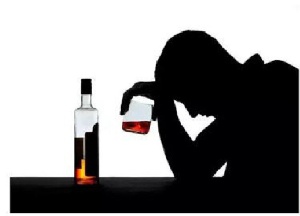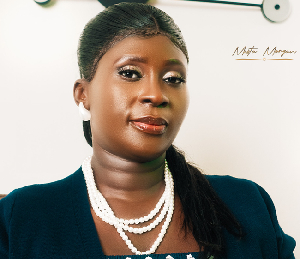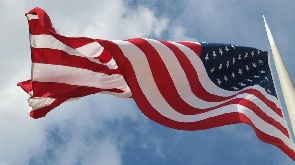This caption on the Ghanaweb general news portal[1] did indeed evoke the ‘purported’ goal as it definitely captured our attention! First, we thought to ourselves that this is correct as aligns with current thinking regarding what interventions work, so it is not new and thus not exciting.
However, we did get curious and were hoping to learn something new! So we read the story!
Guess what? It turns out the actual story is about the ban on advertising drinks containing alcohol in Ghana and NOT a complete ban on alcohol! Well, we were disappointed with this obvious inconsistency but then we also saw a great opportunity (as others have done already, having read the comments section of the post) to inform Ron Cregan (the cited author who questioned the gallant efforts of the Food and Drugs Authority (FDA) to completely ban alcohol advertisements, arguing that it is NOT a solution to a looming epidemic at hand- adolescent/youth problematic alcohol/substance use). In Mr. Cregan’s words: ‘draconian legislation cannot be the solution’.
Our hearts sunk and we began to wonder how many other people especially the youth have read this palpable inaccuracy and the potential effect on their drinking! Mr. Cregan! We are already dealing with a complex issue and we are not sure you’re being helpful here (indeed, one of the comments mentioned that you have not offered any solution!).
We don’t know if the nature of the forum (we understand this was at the 3rd Africa Rising International Advertising Association’s annual summit in Accra) influenced these comments but what we do know for sure is that the unapologetically aggressive alcohol industry activities have just one goal- to capture new markets in the face of tighter regulation in existing ones such as Ghana.
Anyways, some of us will continue to do our bit as ‘citizens and not spectators’ in terms of keeping people informed about important issues of public health concern based on empirical scientific findings.
Is banning alcohol advertisements effective?
Yes! And we’ll explain. Well-conducted research shows strong and consistent evidence that suggests that, in addition to parents and peers, alcohol advertising and marketing have a significant impact on youth decisions to drink[2]. For example, a national study in the US (unfortunately there is not much data in Ghana yet!), suggests that for each additional advertisement a young person saw, he or she drank 1% more! And when alcohol advertisements are reduced, say to about 28%, adolescent monthly alcohol participation fell from 25% to between 24% and 21%, and binge drinking from 12% to between 11% and 8%[3].
These reductions are both statistically and clinically important in public health, so we are not sure where this claim of ‘draconian legislation cannot be a solution’ emanates from! What is more perplexing is that the alcohol industry is very well aware of the consequences of their actions; a survey by an alcohol-industry-funded organization called the Century Council in the USA, found that 73% of the public believes that "alcohol advertising is a major contributor to underage drinking[4].
What are the pathways and how does alcohol advertising attract and influence young people?
Two important factors explain this phenomenon. First, thanks to recent advances in neuroscience, we now know that because of how the human brain develops (something to do with brain maturation (delayed) processes)[5], adolescents are particularly attracted to branded products such as alcohol that are associated with risky behaviour and that provide, in their view, immediate gratification, thrills and/or social status[6].
Second, alcohol advertisements catalyse the formation of positive expectancies (defined as belief about what happens when individuals drink alcohol) about alcohol use and the intention to drink[7, 8]. What is more worrying is that children and adolescents are particularly at increased risk because these beliefs usually emerge within these formative years! Clearly, with this knowledge, we should be thinking about providing safety nets and not to make things worse by facilitating this behaviour through alcohol advertisements.
It is our hope that things have been clarified and that alcohol advertisements do indeed have a negative impact on drinking behaviour among youth in Ghana. This may partly explain why alcohol use in this cohort is a problem in Ghana; one out of five adolescents (23%) engage in risky drinking[9], and 12% adolescents are often drunk[10].
These estimates albeit underreported suggest there is a looming epidemic among the youth in Ghana and urgent innovative public health interventions are required. So yes, whilst we agree with Mr. Cregan that creative intervention approaches are needed, draconian legislation such as banning alcohol advertisements to ensure children and young people are protected IS indeed a very effective and useful approach.
The writers:
Benedict Weobong (PhD) (corresponding author): is a Senior Lecturer and a Global Mental Health epidemiologist at the Department of Social and Behavioural Sciences, School of Public Health University of Ghana. bkweobong@gmail.com Twitter:@BWeobong
Derek Heim (PhD): is a Professor / Director of Research in Psychology at Edge Hill University, UK, and Editor-in-Chief of Addiction Research and Theory. Heimd@edgehill.ac.uk
Disclaimer: views expressed in this piece are ours and do not represent the views of any organisation, group, or association that we may belong to.
References:
1. Ghanaweb. Ban on alcohol not solution to responsible drinking-FDA told. 2019 [cited 2019 22/05/2019].
2. Smith, L.A. and D.R. Foxcroft, The effect of alcohol advertising, marketing and portrayal on drinking behaviour in young people: systematic review of prospective cohort studies. BMC Public Health, 2009. 9: p. 51.
3. Saffer, H. and D. Dave, Alcohol advertising and alcohol consumption by adolescents. Health Econ, 2006. 15(6): p. 617-37.
4. Council, C., "Poll shows many people believe industry encourages teen drinking" in Alcohol Issues Insights. 1991.
5. Andersen, S.L. and M.H. Teicher, Desperately driven and no brakes: developmental stress exposure and subsequent risk for substance abuse. Neurosci Biobehav Rev, 2009. 33(4): p. 516-24.
6. Pechmann C, et al., Impulsive and self-conscious: Adolescents' vulnerability to advertising and promotion. Journal of Public Policy & Marketing, 2005. 24(2): p. 202-221.
7. Austin, E.W. and C. Knaus, Predicting the potential for risky behavior among those "too young" to drink as the result of appealing advertising. J Health Commun, 2000. 5(1): p. 13-27.
8. Austin, E.W., B.E. Pinkleton, and Y. Fujioka, The role of interpretation processes and parental discussion in the media's effects on adolescents' use of alcohol. Pediatrics, 2000. 105(2): p. 343-9.
9. GSS_GHS_ICF, Ghana Demographic and Health Survey. 2008, GSS/GHS/ICF: Accra, Ghana.
10. Doku, D., L. Koivusilta, and A. Rimpela, Socioeconomic differences in alcohol and drug use among Ghanaian adolescents. Addict Behav, 2012. 37: p. 357-360.
Opinions of Wednesday, 29 May 2019
Columnist: Dr. Benedict Weobong















